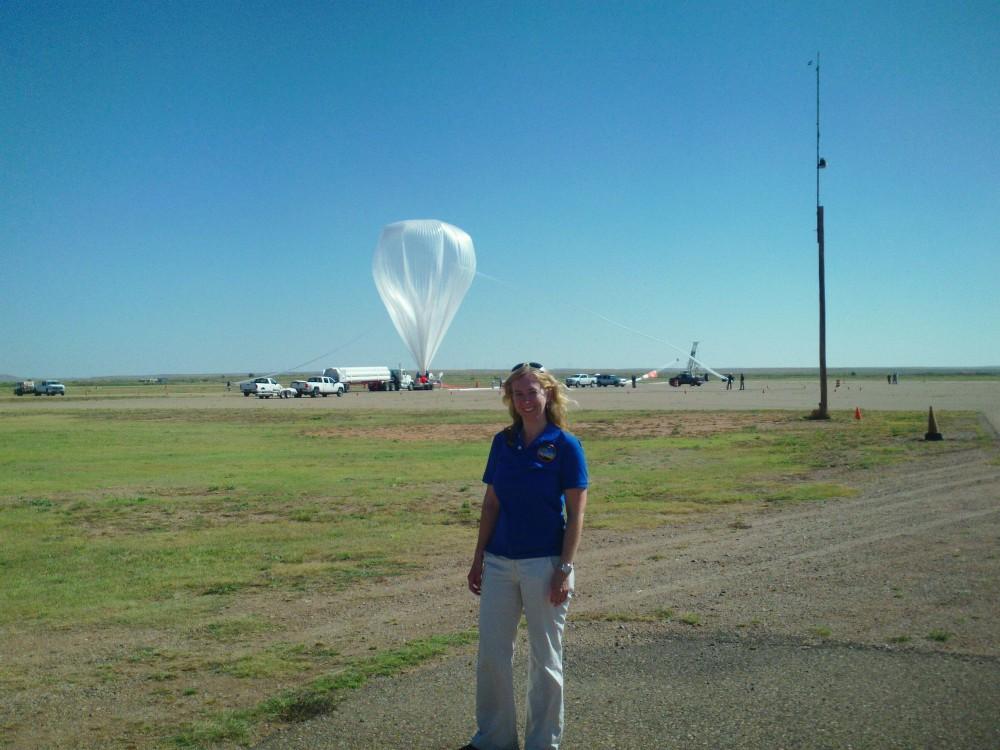Reaching for the stars

Nov 19, 2015
For overachievers, “reach for the stars” can become a bit of a mantra. For one Grand Valley State University student, she’s quite literally reaching for the stars during her internship at NASA.
Amanda Stark, 35, is currently finishing up her second internship at the NASA Langley Research Center in Hampton, Virginia. A non-traditional student at GVSU, she is working toward a bachelor of science in engineering product design and manufacturing. Even though this is her second internship with NASA, her work differs greatly from her first time through the program.
“Last winter semester, my first time, I worked closely with the contamination control group to develop a procedure that could be used to evaluate what contaminants were present in an isopropyl alcohol rinse,” she said. “This time I was treated more like a full employee and had a greater variety of tasks to complete.”
Stark works alongside about 45 other interns this semester. She interns in the System Integration and Test Branch (SITB) at the research center. They provide two services: supply projects with the correct amount of people and equipment needed to assemble the hardware and provide the required equipment “needed to perform tests that simulate space environments and conditions that can be experienced during launch.” The Thermal Vacuum Lab, where Stark works, is responsible for a multitude of things as well.
“We are responsible for not only simulating space environments but also evaluation of how the materials of the chosen components will survive in the simulated environment,” she explained. “This is especially important when optics and sensors are needed to collect data.”
Last semester, Stark helped create a procedure that would evaluate the rinse from a cryogenic surface for non-volatile particles. This specific procedure would help other projects decide if substances that were being outgassed would be dangerous to hardware that is more sensitive.
This semester, Stark came back to find out that a project she had worked on last spring was about to launch.
“That project would be RaD-X, or radiation dosimetry experiment, which is a high-altitude balloon project whose aim is to study how cosmic rays interact with our atmosphere,” she said. “A big part of this project is to look at the levels of radiation that are present at the altitudes in which commercial aircraft fly.
“This is a concern, since there has been an increase in air traffic over the last decade and there is not an easy way to determine the amount of radiation that not only the employees of the airlines are being exposed to, but also the travelers that they cater to.”
She said she felt very lucky to be able to work with her project group, even though she joined at the end.
“This semester I (had) to write and run a thermal vacuum test for another project that would be accompanying a satellite to low Earth orbit,” Stark explained. “This required me to interact with the thermal engineer and project engineer in order to make sure that the test included all the required parameters. It was an interesting experience since I had to learn about how to run the facilities before running the test.”
Chris Plouff, school of engineering interim director at GVSU, knows Stark and is confident that this opportunity will benefit her greatly after she graduates.
“She brought a very unique background and perspective from her (fine) art training that have benefited her in her approach to her engineering courses and co-op experiences,” Plouff said about Stark. “She is the second student we have had co-op at NASA and the first to have a second semester of co-op with them, which is truly a testament to her abilities. She has made a very favorable impression with her supervisors and colleagues at NASA.”
Stark said she did not have to re-apply for another internship; they asked her to come back. In fact, the internship position was written for her. The internship sessions are similar to GVSU’s semester breaks, as she is getting close to the end of this session.
She also said her decision to return to school to study engineering was validated by her first semester at NASA. She hopes that this semester, she will be able to take away the experience of testing and writing actual procedures.
“Just last week I sat in on some lectures and over the course of the semester I have been able to go on some facility tours,” Stark said. “It is always amazing to me as to how NASA Langley Research Center always has all kinds of activities going on that are educationally based.”

























